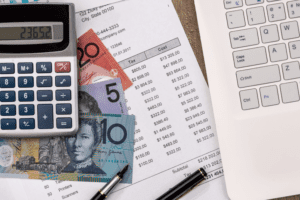Amortization definition
susanti
- 0

Like mortgages and car loans, personal loans use amortization to pay off the loan over time. The borrower makes regular payments towards the loan, which are used to pay off the principal and interest. Mortgages are one of the most common types of loans that use amortization. Under generally accepted accounting principles (GAAP), intangible assets are recorded on the balance sheet at their historical cost. The cost of the intangible asset is then allocated over its useful life using the straight-line method. The straight-line method assumes that the asset will be used evenly over its useful life.
Find Similar Words
If an intangible asset has an unlimited life, then it is still subject to a periodic impairment test, which may result in a reduction of its book value. Luckily, you do not need to remember this as online accounting softwares can help you with posting the correct entries with minimum fuss. With straight-line amortization, also known as equal or constant amortization, the debt or value of an asset is repaid or depreciated in equal amounts over the entire term. Understanding these penalties allows for better financial planning, ensuring your loan aligns with possible future opportunities to pay off early without unnecessary costs. Amortized loans are suited for predictable pay down, balloon loans suit those expecting large future cash inflows, and revolving debt offers flexibility. However, the uncertainty of future market rates means ARMs are best suited for financially flexible borrowers who can adapt if payments rise.
- Here, the installment payments are constant, but the interest and principal portion of the payments changes over time.
- This structure is particularly beneficial for borrowers looking for long-term loans with stable monthly payments.
- The amortization of software is calculated based on the cost of the software, the useful life of the software, and the expected future cash flows generated by the software.
- Market value could potentially be much higher or lower than the original cost of an asset net of its amortized cost.
- In other words, amortization is recorded as a contra asset account and not an asset.
- Lower interest rates can result in lower monthly payments and less interest paid over time.
ACCOUNTING for Everyone
Kiah Treece is a former attorney, small business owner and personal finance coach with extensive experience in real estate and financing. Her focus is on demystifying debt to help consumers and business owners make informed financial decisions. She has been featured by leading publications, including Forbes Advisor, Investopedia and Money.
- This trade-off, however, ensures peace of mind over the long term, especially for those planning to stay in their home for several years.
- Amortization is a technique to calculate the progressive utilization of intangible assets in a company.
- A fixed-rate mortgage ultimately provides the assurance needed for steady financial management, helping borrowers avoid the stress of potential interest rate increases.
- However, it works similarly in the case of loans, but the payment structure is different.
- Owing to this, the tangible assets are depreciated over time and the intangible ones are amortized.
- The amortization period not only affects the length of the loan repayment but also the amount of interest paid for the mortgage.
Comparison Table of Amortization Types

The costs have been amortized over decades https://www.bookstime.com/ and proved to be totally worth the effort. The systematic allocation of the discount, premium, or issue costs of a bond to expense over the life of the bond. In other words, amortization is recorded as a contra asset account and not an asset.

Types of Financial Information (Explained)
Through amortization, the company will expense $5,000 annually as an amortization expense, smoothly distributing the cost over the patent’s useful life. The loan schedule consists of a down payment and periodic payments of interest+principal. A loan amortization schedule is a table that shows the breakdown of each payment made towards a loan. Extra payment is a special case of amortization where the borrower pays more than the required monthly payment. This additional payment reduces the principal balance, which in turn reduces the amount retained earnings of interest charged on the loan. Personal loans are loans that are taken out for personal reasons, such as home improvements or debt consolidation.
Therefore, only a small additional slice of the amount paid can have such an enormous difference. The balance between principal and interest payments on an amortized loan shifts progressively over time, a concept that often surprises new borrowers initially. An amortized loan is a form of financing that is paid off over a set period of time. More of each payment goes toward principal and less toward interest until the loan is paid off. Balloon loans are a type of loan that has a large final payment, called a balloon payment, due at the end of the loan term.

Here, the installment payments are constant, but the interest and principal portion of the payments changes over time. Building equity steadily positions borrowers to capitalize on their investment both during ownership and at resale, reinforcing the importance of regular repayment in an amortized loan. For example, let’s say you take out a four-year, $30,000 loan that has 3% interest. Using the formula outlined above, you can plug in the total loan amount, monthly interest rate, and the number of payments.
- It also shows the remaining balance of the loan after each payment is made.
- You’ll need the total loan amount, the length of the loan amortization period (how long you have to pay off the loan), the payment frequency (e.g., monthly or quarterly) and the interest rate.
- It’s a technique used to help reduce the book value of any loans you have.
- When the income statements showcase the amortization expense, the value of the intangible asset is reduced by the same amount.
- Furthermore, amortization in accounting offers a more accurate representation of a company’s financial performance.
- When this happens it can be fairly easy to calculate exactly what you need.
Amortization and depreciation are similar concepts, but they are used in different contexts. Amortization is used to refer to the process of spreading out the cost of an intangible asset over its useful life. Meanwhile, depreciation is used to refer to the process of spreading out the cost of a tangible asset over its useful life.
Steps to Calculate Your Payments
- This is in accordance with the matching principle, which requires that expenses be matched with the revenue they generate.
- And amortization of loans can come in especially handy for any repayments.
- The amortization period should ideally be between 5 and 15 years, depending on the type of investment and individual financial goals.
- Under generally accepted accounting principles (GAAP), intangible assets are recorded on the balance sheet at their historical cost.
- When selecting a loan type, it’s crucial to match the choice with your financial capacity and long-term strategy.
Accountants use amortization to ensure that the cost of the intangible asset is matched with the revenue it generates. This is in accordance with the matching principle, which requires that expenses be matched with the revenue they generate. In general, the word amortization means to systematically reduce a balance over time. In accounting, amortization is amortized definition conceptually similar to the depreciation of a plant asset or the depletion of a natural resource.